한국응용과학기술학회 논문 검색
.jpg)
Effects of Yeast-Derived Metal Peptide Complex Developed for Cosmetic Ingredients on Skin Cells
간행물 정보 : Vol. 42 No. 1, 2025년,
파일형식 : pdf

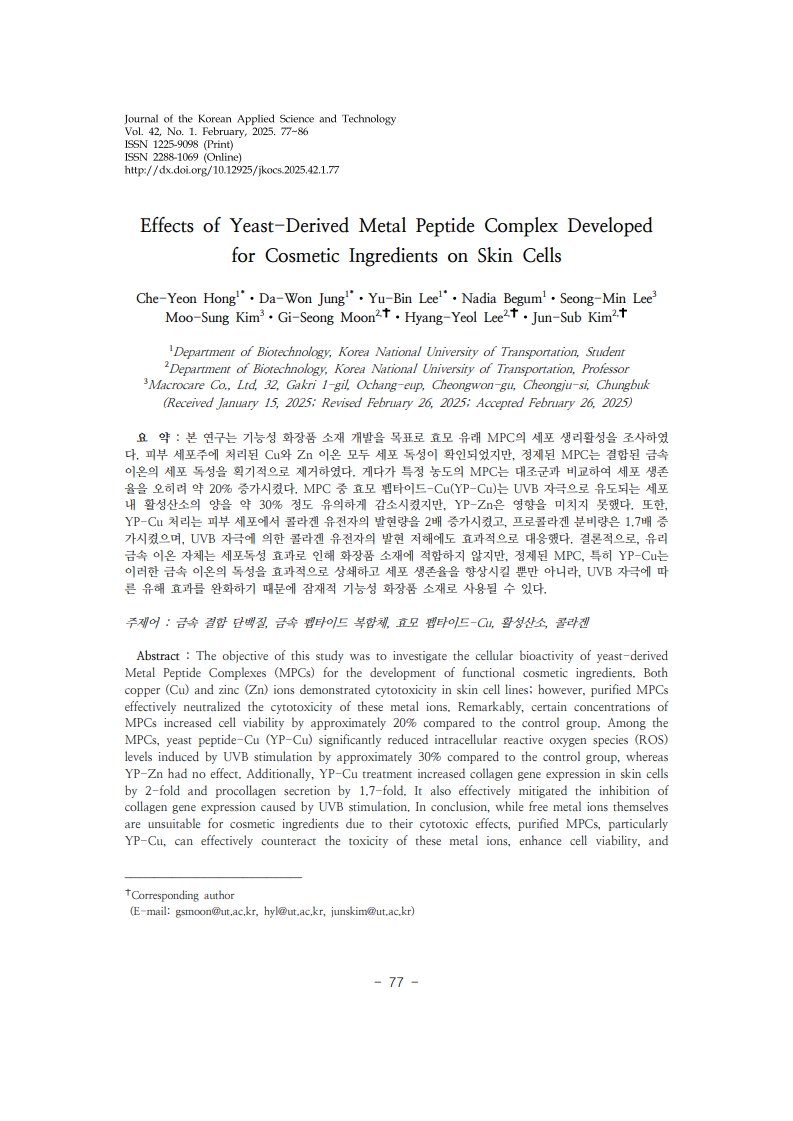
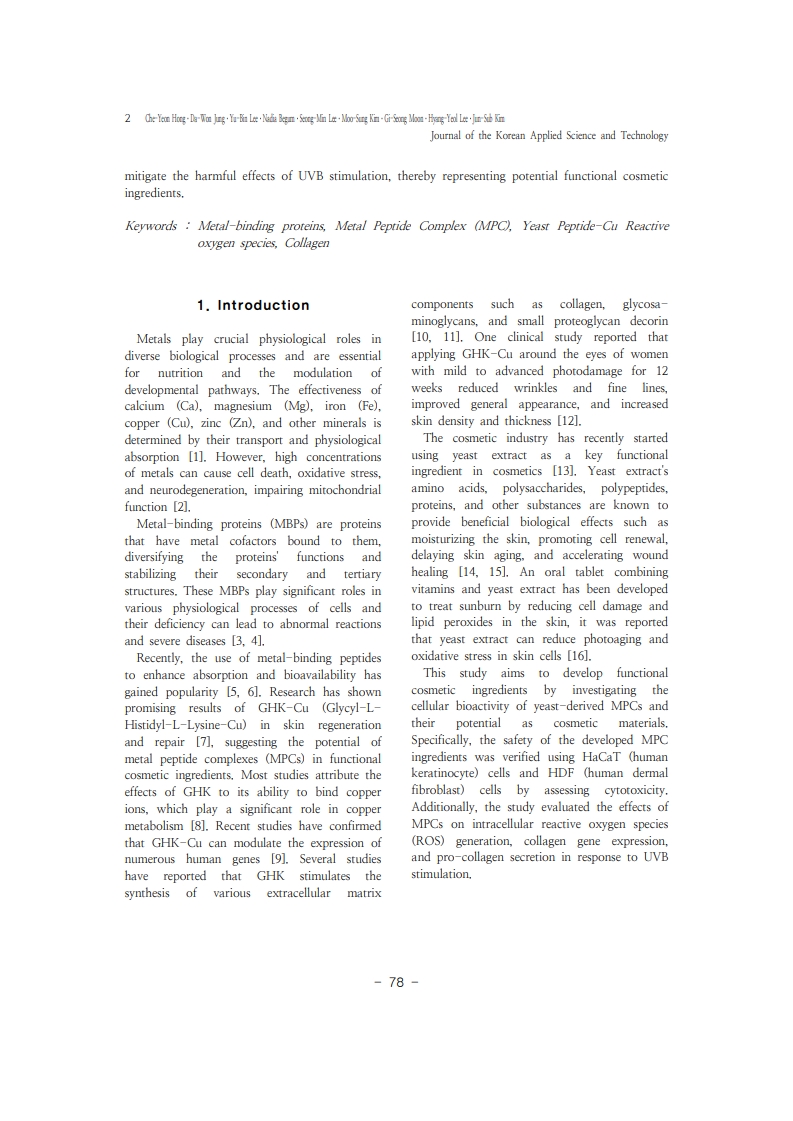
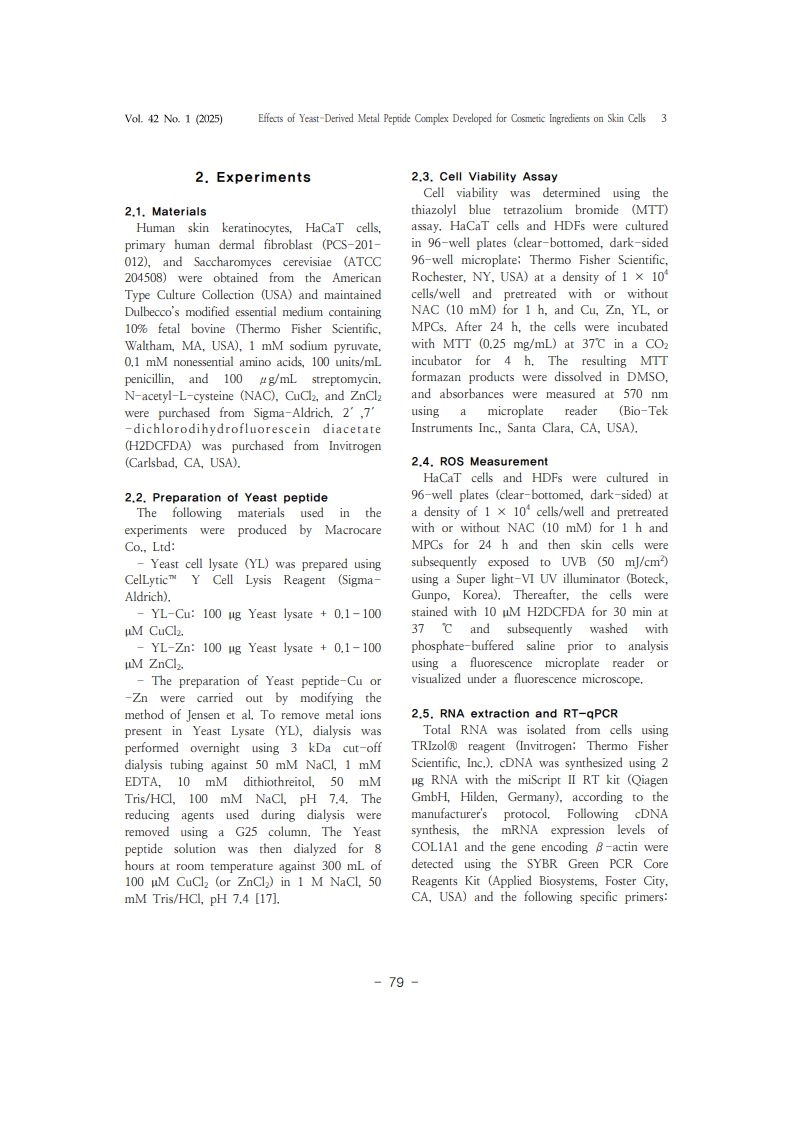
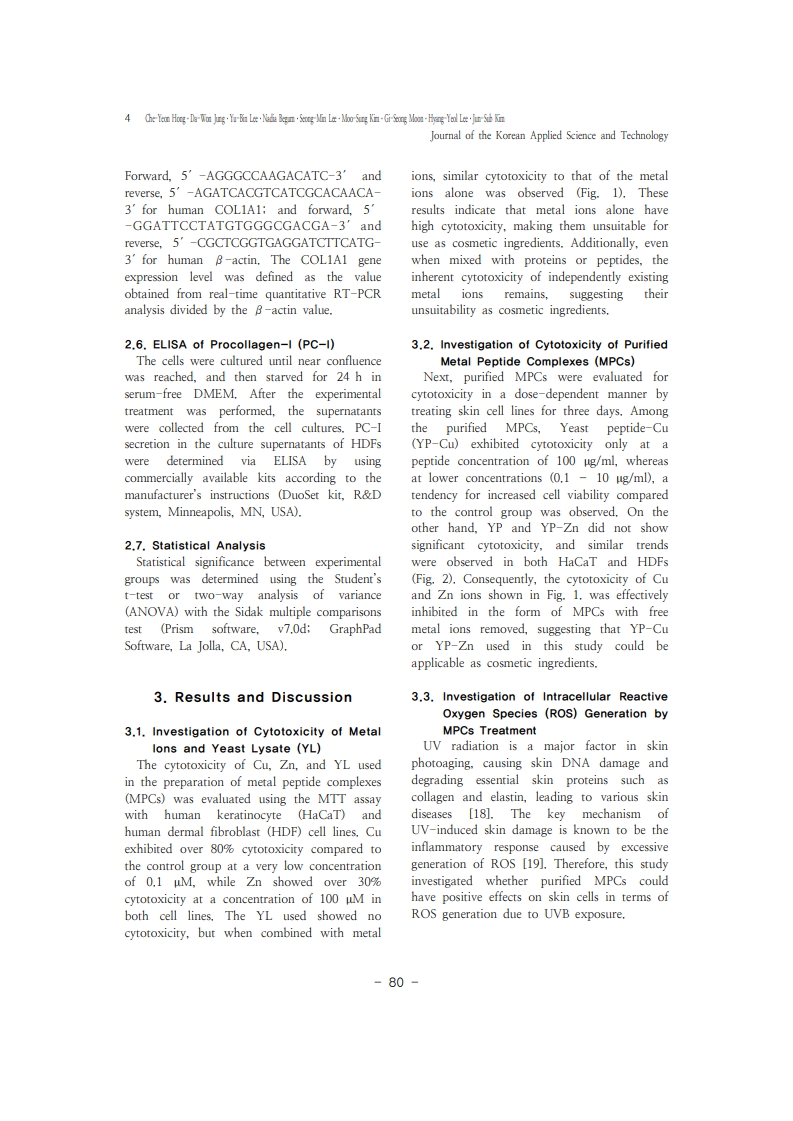
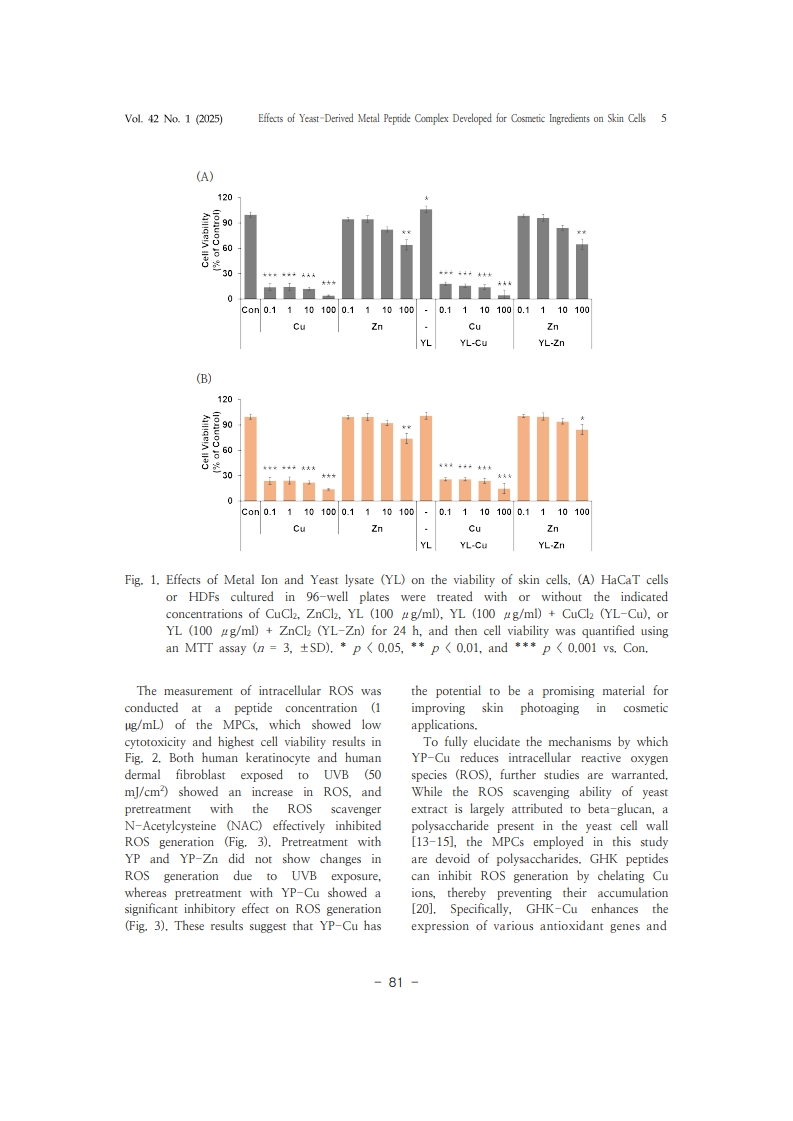
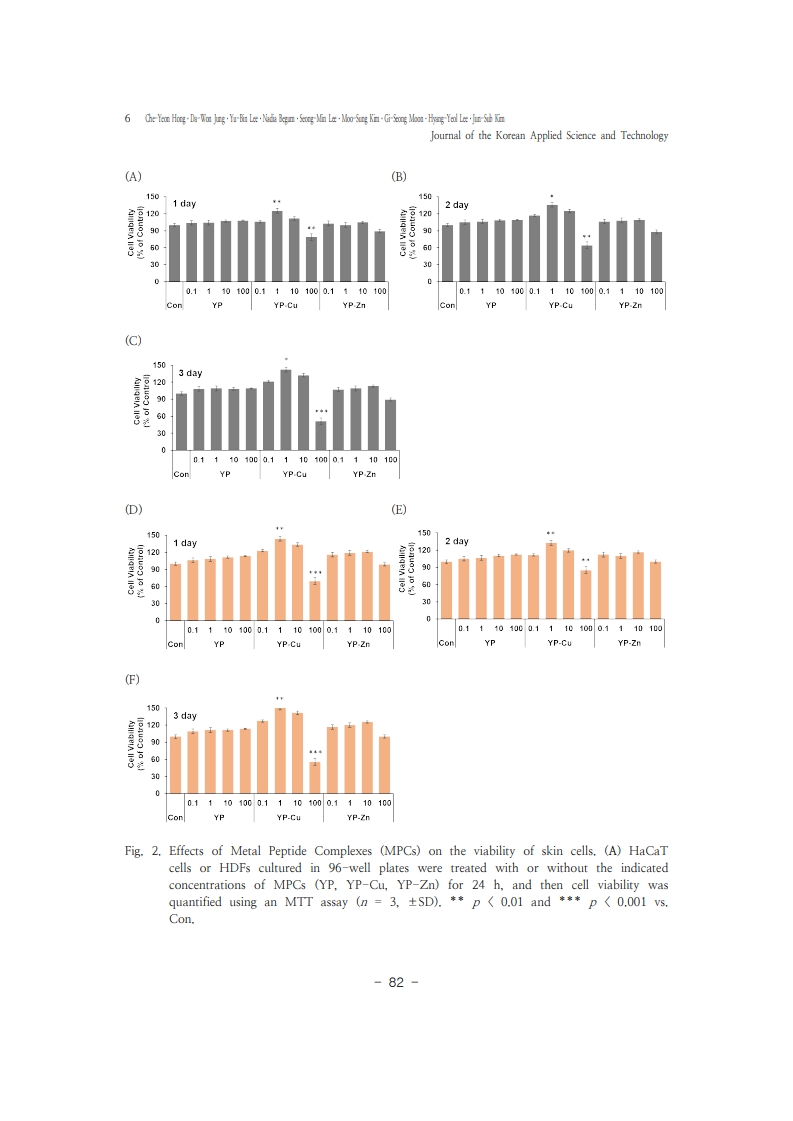
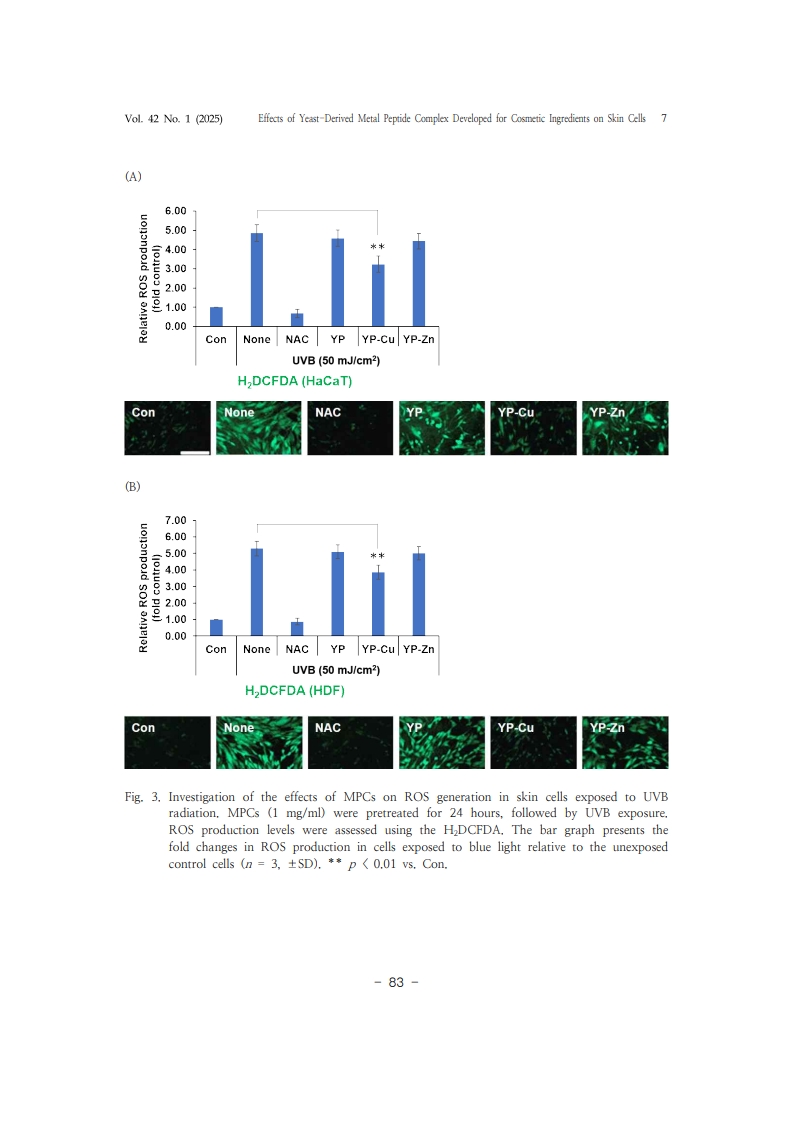
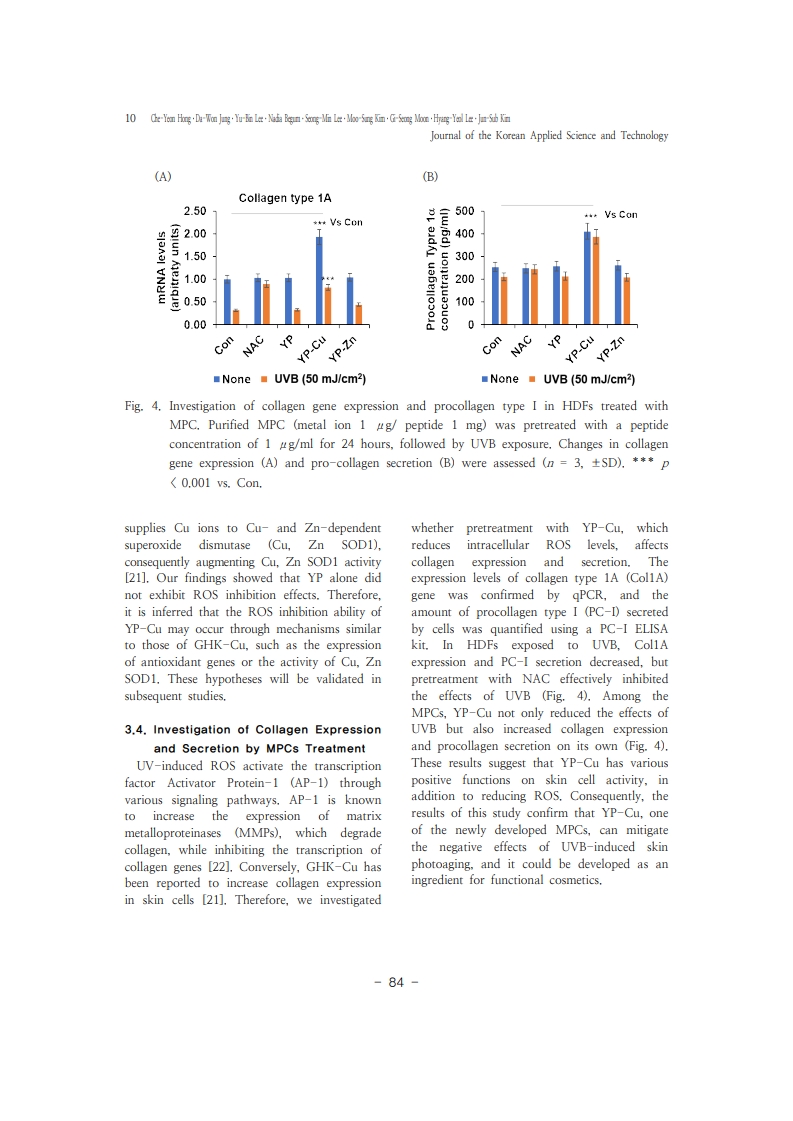
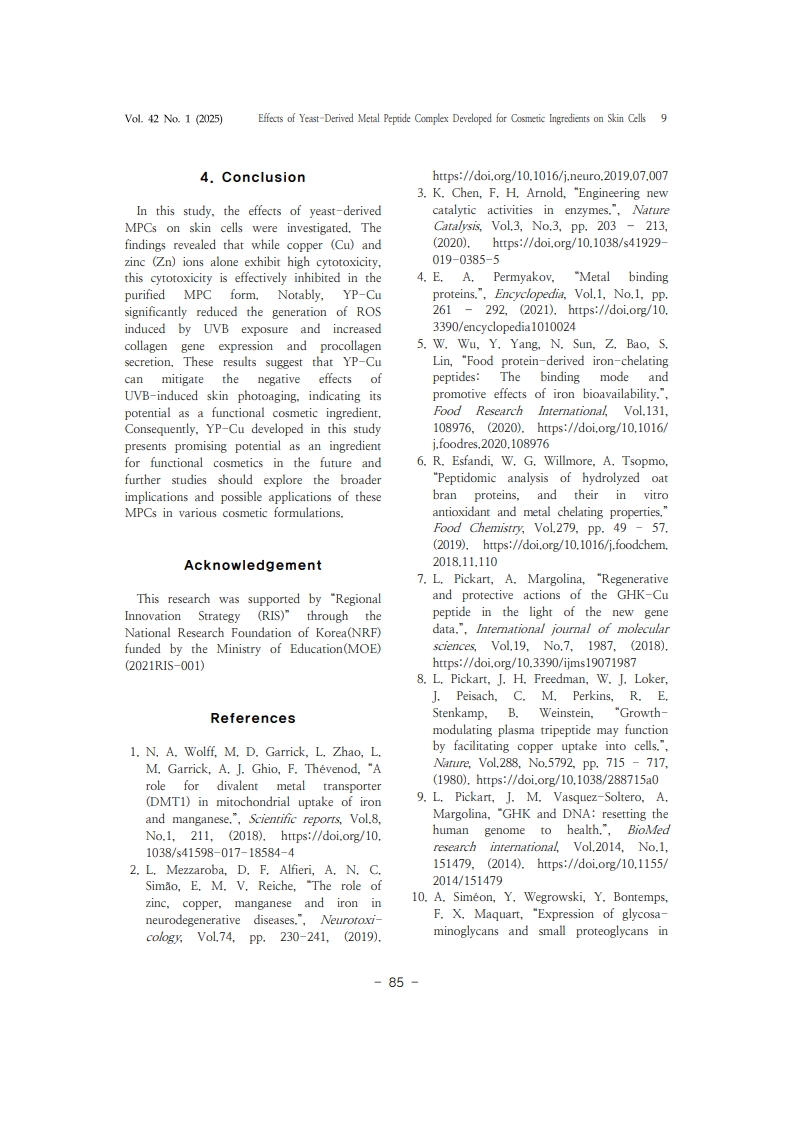
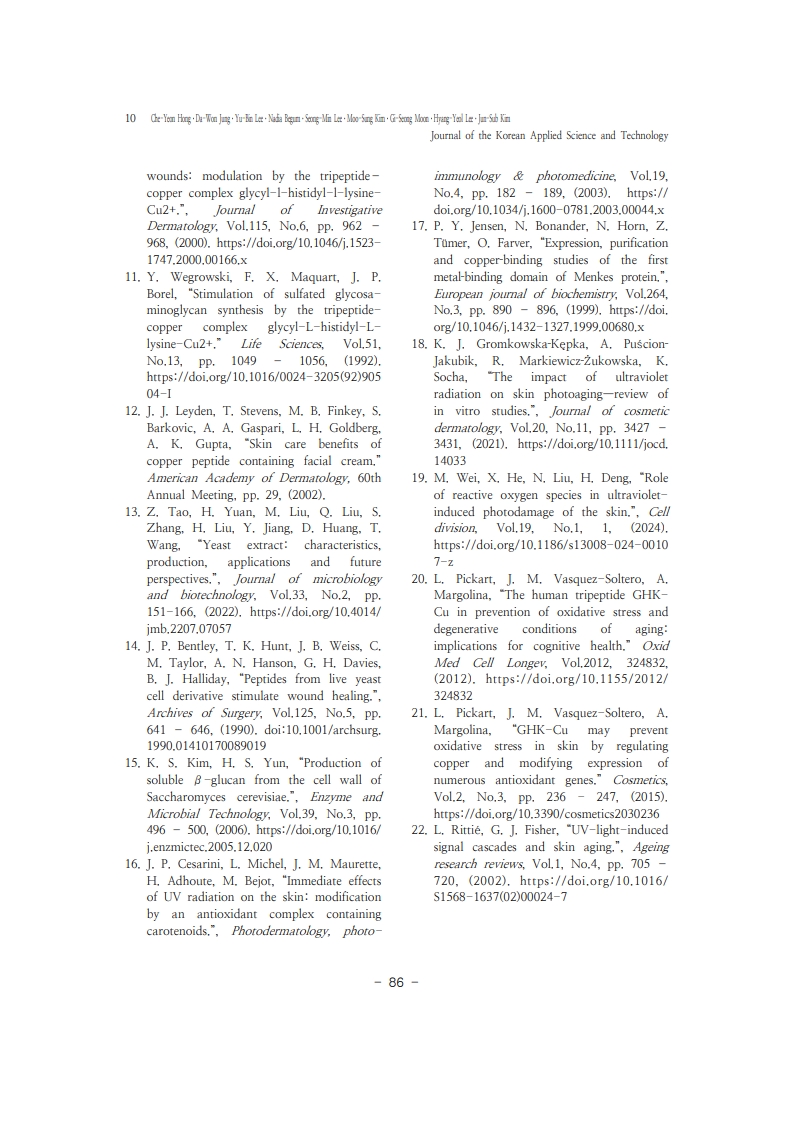
1. N. A. Wolff, M. D. Garrick, L. Zhao, L. M. Garrick, A. J. Ghio, F. Thévenod, “Arole for divalent metal transporter (DMT1) in mitochondrial uptake of iron
and manganese.”, Scientific reports, Vol.8, No.1, 211, (2018).https://doi.org/10.1038/s41598-017-18584-4
2. L. Mezzaroba, D. F. Alfieri, A. N. C. Simão, E. M. V. Reiche, “The role ofzinc, copper, manganese and iron in neurodegenerative diseases.”, Neurotoxicology,
Vol.74, pp. 230-241, (2019). https://doi.org/10.1016/j.neuro.2019.07.007
3. K. Chen, F. H. Arnold, “Engineering new catalytic activities in enzymes.”, NatureCatalysis, Vol.3, No.3, pp. 203 – 213, (2020).
https://doi.org/10.1038/s41929-019-0385-5
4. E. A. Permyakov, “Metal binding proteins.”, Encyclopedia, Vol.1, No.1, pp.261 – 292, (2021). https://doi.org/10.3390/encyclopedia1010024
5. W. Wu, Y. Yang, N. Sun, Z. Bao, S. Lin, “Food protein-derived iron-chelatingpeptides: The binding mode and promotive effects of iron bioavailability.”,
Food Research International, Vol.131, 108976, (2020).https://doi.org/10.1016/j.foodres.2020.108976
6. R. Esfandi, W. G. Willmore, A. Tsopmo, “Peptidomic analysis of hydrolyzed oatbran proteins, and their in vitro antioxidant and metal chelating properties.”
Food Chemistry, Vol.279, pp. 49 - 57. (2019).https://doi.org/10.1016/j.foodchem.2018.11.110
7. L. Pickart, A. Margolina, “Regenerative and protective actions of the GHK-Cupeptide in the light of the new gene data.”, International journal of molecular
sciences, Vol.19, No.7, 1987, (2018). https://doi.org/10.3390/ijms19071987
8. L. Pickart, J. H. Freedman, W. J. Loker, J. Peisach, C. M. Perkins, R. E.Stenkamp, B. Weinstein, “Growthmodulatingplasma tripeptide may function
by facilitating copper uptake into cells.”, Nature, Vol.288, No.5792, pp. 715 - 717,(1980). https://doi.org/10.1038/288715a0
9. L. Pickart, J. M. Vasquez-Soltero, A. Margolina, “GHK and DNA: resetting thehuman genome to health.”, BioMed research international, Vol.2014, No.1,
151479, (2014). https://doi.org/10.1155/2014/151479
10. A. Siméon, Y. Wegrowski, Y. Bontemps, F. X. Maquart, “Expression of glycosaminoglycansand small proteoglycans in wounds: modulation by the tripeptide–copper complex glycyl-l-histidyl-l-lysineCu2+.”,Journal of InvestigativeDermatology, Vol.115, No.6, pp. 962 – 968, (2000).
https://doi.org/10.1046/j.1523-1747.2000.00166.x
11. Y. Wegrowski, F. X. Maquart, J. P. Borel, “Stimulation of sulfated glycosaminoglycansynthesis by the tripeptidecoppercomplex glycyl-L-histidyl-Llysine-Cu2+.”Life Sciences, Vol.51,No.13, pp. 1049 – 1056, (1992).https://doi.org/10.1016/0024-3205(92)90504-I
12. J. J. Leyden, T. Stevens, M. B. Finkey, S. Barkovic, A. A. Gaspari, L. H. Goldberg, A. K. Gupta, “Skin care benefits of copper peptide containing facial cream.” American Academy of Dermatology, 60th Annual Meeting, pp. 29, (2002).
13. Z. Tao, H. Yuan, M. Liu, Q. Liu, S. Zhang, H. Liu, Y. Jiang, D. Huang, T.Wang, “Yeast extract: characteristics, production, applications and future
perspectives.”, Journal of microbiology and biotechnology, Vol.33, No.2, pp.151-166, (2022). https://doi.org/10.4014/jmb.2207.07057
14. J. P. Bentley, T. K. Hunt, J. B. Weiss, C. M. Taylor, A. N. Hanson, G. H. Davies,B. J. Halliday, “Peptides from live yeast cell derivative stimulate wound healing.”,
Archives of Surgery, Vol.125, No.5, pp. 641 – 646, (1990).https://doi.org/10.1001/archsurg.1990.01410170089019
15. K. S. Kim, H. S. Yun, “Production of soluble β-glucan from the cell wall ofSaccharomyces cerevisiae.”, Enzyme and Microbial Technology, Vol.39, No.3, pp.
496 – 500, (2006). https://doi.org/10.1016/j.enzmictec.2005.12.020
16. J. P. Cesarini, L. Michel, J. M. Maurette, H. Adhoute, M. Bejot, “Immediate effects of UV radiation on the skin: modification by an antioxidant complex containing carotenoids.”, Photodermatology, photoimmunology& photomedicine, Vol.19, No.4, pp. 182 – 189, (2003).
https://doi.org/10.1034/j.1600-0781.2003.00044.x
17. P. Y. Jensen, N. Bonander, N. Horn, Z. Tümer, O. Farver, “Expression, purificationand copper‐binding studies of the first metal‐binding domain of Menkes protein.”,European journal of biochemistry, Vol.264,No.3, pp. 890 – 896, (1999). https://doi.org/10.1046/j.1432-1327.1999.00680.x
18. K. J. Gromkowska‐Kępka, A. Puścion‐ Jakubik, R. Markiewicz‐Żukowska, K.Socha, “The impact of ultraviolet radiation on skin photoaging—review of
in vitro studies.”, Journal of cosmetic dermatology, Vol.20, No.11, pp. 3427 – 3431, (2021). https://doi.org/10.1111/jocd.14033
19. M. Wei, X. He, N. Liu, H. Deng, “Role of reactive oxygen species in ultravioletinducedphotodamage of the skin.”, Cell
division, Vol.19, No.1, 1, (2024). https://doi.org/10.1186/s13008-024-00107-z
20. L. Pickart, J. M. Vasquez-Soltero, A. Margolina, “The human tripeptide GHKCuin prevention of oxidative stress and degenerative conditions of aging:
implications for cognitive health.” Oxid Med Cell Longev, Vol.2012, 324832,(2012). https://doi.org/10.1155/2012/324832
21. L. Pickart, J. M. Vasquez-Soltero, A. Margolina, “GHK-Cu may preventoxidative stress in skin by regulating copper and modifying expression of
numerous antioxidant genes.” Cosmetics, Vol.2, No.3, pp. 236 - 247, (2015).https://doi.org/10.3390/cosmetics2030236
22. L. Rittié, G. J. Fisher, “UV-light-induced signal cascades and skin aging.”, Ageing research reviews, Vol.1, No.4, pp. 705 – 720, (2002). https://doi.org/10.1016/S1568-1637(02)00024-7
